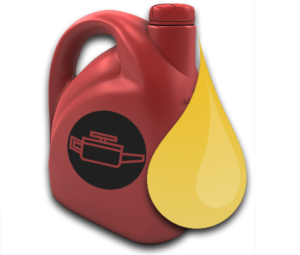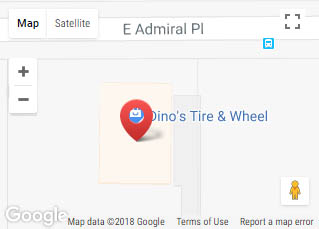Oil Change Tips
 It is recommended that you get an Oil Change on your vehicle every 3,500 miles for regular oil and every 5,000 miles for synthetic oil. Checking and changing the oil is essential to keep today’s engines working properly and efficiently. Check the oil level with the engine and the car parked on a flat surface. Open the hood, remove the dipstick, wipe off with a cloth towel or paper, then back into the oil tank. Pull it again and see if the level is within the acceptable range marked on the dipstick. If you add the oil yourself, do not over fill. Over filling can damage the engine.
It is recommended that you get an Oil Change on your vehicle every 3,500 miles for regular oil and every 5,000 miles for synthetic oil. Checking and changing the oil is essential to keep today’s engines working properly and efficiently. Check the oil level with the engine and the car parked on a flat surface. Open the hood, remove the dipstick, wipe off with a cloth towel or paper, then back into the oil tank. Pull it again and see if the level is within the acceptable range marked on the dipstick. If you add the oil yourself, do not over fill. Over filling can damage the engine.
Most automobile manufacturers recommend oil changes once every year or every 7,500 miles of car and light truck gasoline engines. Diesel engines and turbocharged gasoline engines, the usual recommendation is every 3,000 miles or six months.
You’ll find that a once a year (7,500 mile) oil change is for vehicles driven in ideal circumstances. What most of us think is “normal” driving is actually “severe service” driving. This includes frequent short trips (less than 10 miles, especially in cold weather), stop-and-go city traffic driving, driving in dusty conditions (gravel roads, etc), and sustained highway driving speed during the warm season. For this type of driving behavior, the recommendation is to change the oil every 3,000 miles or six months.
For maximum protection, most oil companies say to change the oil every 3,000 miles or three to six months regardless of what type of driving you do. Regular oil changes for preventative maintenance are cheap insurance against engine wear, and will always save you money in the long run if you keep a car for more than three or four years. It’s very uncommon to see an engine that has been well maintained with regular oil changes develop major bearing, ring, cam or valve problems under 100,000 miles.
What About The Oil Filter?
To reduce the costs of vehicle ownership and maintenance, many car makers say the oil filter only needs to be replaced at every other oil change. Most mechanics will tell you this is false economy.
The oil filters on most engines today have been downsized to save weight, cost and space. The “standard” quart-sized filter that was once common on most engines has been replaced by a pint-sized (or smaller) filter. You don’t have to be a rocket scientist to figure out that a smaller filter has less total filtering capacity. Even so, the little filters should be adequate for a 3,000 mile oil change intervals — but may run out of capacity long before a second oil change at 6,000 or 15,000 miles.
Replacing the oil filter every time the oil is changed, therefore, is highly recommended.
Filter Replacement
If you do your own oil changes, make sure you get the correct filter for your engine. Follow the filter manufacturer’s listings in its catalog. Many filters that look the same on the outside have different internal valving. Many overhead cam engines, for example, require an “anti-drainback” valve in the filter to prevent oil from draining out of the filter when the engine is shut off. This allows oil pressure to reach critical engine parts more quickly when the engine is restarted. Filters that are mounted sideways on the engine typically require an anti-drainback valve.
Used motor oil should be disposed of properly. The Environmental Protection Agency does not consider used motor oil to be a hazardous chemical, but it can foul ground water and does contain traces of lead. The best way to dispose of used motor oil is to take it to a service station, quick lube shop, parts store or other facility for recycling. Your old oil will either be rerefined into other lubricants or petroleum products, or burned as fuel.
Do not dump used motor oil on the ground, down a drain, into a storm sewer or place it in the trash. Many landfills will not accept used motor oil even if it is in a sealed container because it will eventually leak out into the ground. If you can’t find an environmentally-acceptable way to dispose of the stuff, maybe you shouldn’t be changing your own oil. Service facilities that do oil changes all have storage tanks and recycling programs to dispose of used oil.
It is recommended that you get an Oil Change on your vehicle every 3,500 miles for regular oil and every 5,000 miles for synthetic oil. Checking and changing the oil is essential to keep today’s engines working properly and efficiently.






